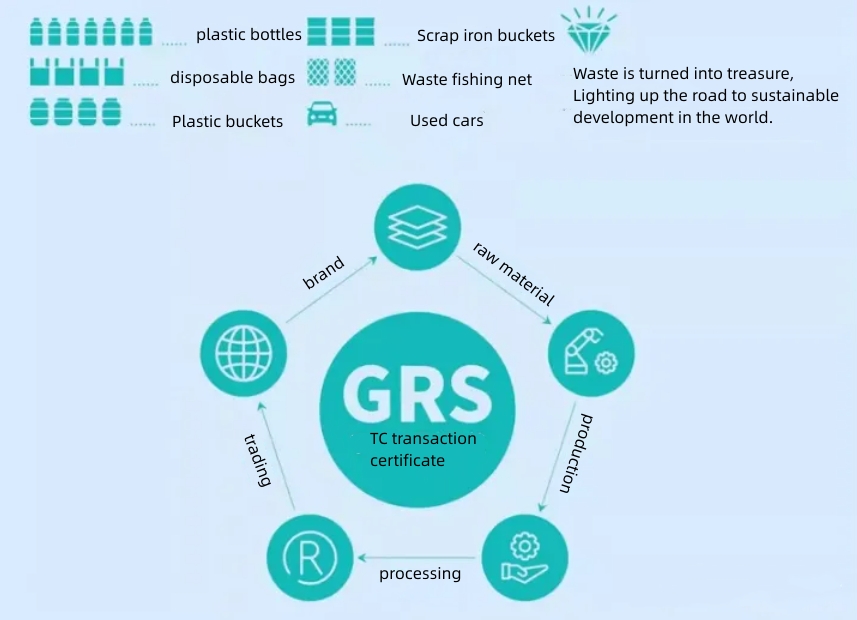

What is Sustainable Renewable Material PCR in Cosmetic ?
PCR sustainable renewable materials are increasingly important in industries like cosmetic packaging and skin care packaging. These materials include r-PP, r-PE, r-ABS, r-PS, r-PET, and others, which are used for making eco-friendly plastic packaging products such as acrylic bottles, PP bottles, PET bottles, and more.

What Are PCR Materials?
PCR, or post-consumer recycled material, refers to plastic products that have been recycled after being used by consumers. As the global use of plastic packaging, especially in cosmetic packaging and skin care packaging, continues to rise, plastic waste has led to significant environmental concerns. To address this, organizations like the MacArthur Foundation have been at the forefront of driving efforts to tackle plastic pollution. Major brands, including L'Oréal, Unilever, and Coca-Cola, have begun investing in the development and use of PCR materials as part of their sustainability initiatives. These materials are part of the circular economy, which advocates for reducing carbon emissions, promoting recycling, and encouraging eco-friendly packaging.
Who Is Using PCR Materials? Why Use PCR?
Several well-known brands, such as Adidas, Nike, Coca-Cola, Unilever, and L'Oréal, have already adopted PCR materials. One of the most established applications of PCR materials is in the textile industry, where recycled PET from plastic bottles is commonly used. These companies are committed to sustainability and aim to reduce the environmental impact of their products, including the packaging of cosmetics and personal care products. Many brands have set ambitious goals, such as using 100% recycled or renewable materials in their packaging by 2030. For example, a company that previously used 10,000 tons of virgin plastic annually might shift entirely to PCR materials, reducing waste and conserving resources.
Types of PCR Materials Used in Cosmetic Packaging
Currently, the most commonly used PCR materials in the market include PET, PP, ABS, PS, and PE. In the cosmetic packaging industry, these materials are used for producing eco-friendly plastic bottles, jars, and containers for skin care products. While PCR plastics are a great option for packaging, their performance can vary compared to virgin plastics. For example, PCR PP may differ in color, smell, and appearance from new PP materials, which can influence the final product’s visual appeal and performance. This makes it essential for brands to consider specific product requirements when opting for PCR materials.

Which Industries Can Benefit from PCR Materials?
PCR materials can be applied across a wide range of industries, from home appliances and automotive to cosmetic packaging. In the skin care packaging industry, PCR plastics are increasingly being used for creating sustainable, recyclable containers such as acrylic bottles, PET bottles, and other plastic packaging solutions. However, it’s important to note that the properties of PCR materials can differ from those of virgin materials, which may limit their use depending on the performance requirements of the product. For example, packaging for sensitive skin care products may require stricter standards for color, scent, and durability, which can influence the choice of material.
What Does PCR Content Mean? What is 30% PCR?
When a product contains 30% PCR material, it means that 30% of the total plastic content is made from recycled plastic. For instance, if a cosmetic container weighs 10 kg, 3 kg of that weight would come from PCR material. The remaining 7 kg would be from virgin material. Suppliers can provide PCR materials with various percentages of recycled content, making it easier for brands to achieve specific sustainability goals in their cosmetic packaging. For example, skin care brands may use 30% PCR in their plastic bottles or other packaging solutions to reduce their reliance on new plastics and contribute to a circular economy.
How Can You Prove That This Is PCR Material?
To ensure the authenticity of PCR materials, various certification bodies exist to verify their origin and content. One widely recognized certification is the Global Recycled Standard (GRS), which ensures that recycled materials, including PCR plastics, are responsibly sourced and processed. This certification guarantees that the materials used in packaging, including for cosmetics, are genuinely post-consumer recycled, contributing to sustainability goals. In addition to this certification, transaction certificates from the supplier are also required to verify the amount of PCR material used in production.

Conclusion
As the demand for sustainable packaging grows, PCR materials are playing a crucial role in making cosmetic packaging more eco-friendly. By incorporating PCR content into products like PET and PP plastic bottles, cosmetic companies can significantly reduce their environmental footprint. The use of recyclable, post-consumer recycled materials such as rPET, PCR, and rPP in skin care packaging is becoming an essential part of the industry's move towards a circular economy and sustainability.





